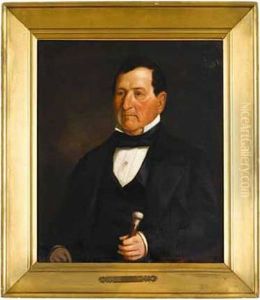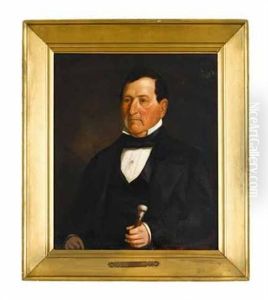David Broderick Walcutt Paintings
David Broderick Walcutt was an American artist born in 1819, whose life and career spanned much of the 19th century, a period marked by significant cultural and socio-political transformations in the United States. Walcutt's contributions to the art world, though not as widely recognized as those of his contemporaries, provide insightful glimpses into the evolving American landscape, both literal and metaphorical, of his time.
Walcutt began his artistic journey in an era when the United States was rapidly expanding westward, and the nation's identity was in a state of flux. His work, primarily focused on painting, captured the essence of American life, its landscapes, and its people, with a particular emphasis on the natural beauty and burgeoning cities of the nation. Despite the lack of extensive documentation on his education and training in the arts, Walcutt's body of work suggests that he possessed a keen eye for detail and a profound appreciation for the American spirit.
Throughout his career, Walcutt navigated the challenges of an artist's life in the 19th century, including the evolving art market, the impact of technological advancements on art production and distribution, and the shifting tastes of the American public. His ability to adapt to these changes, while maintaining a consistent thematic focus on American themes, speaks to his resilience and commitment to his craft.
David Broderick Walcutt passed away in 1882, leaving behind a legacy that, while perhaps not as celebrated as that of some of his contemporaries, offers valuable insights into the artistic and cultural landscapes of 19th-century America. His works continue to be studied by art historians and enthusiasts alike, serving as windows into the past and reminders of the rich tapestry of American history and identity.

